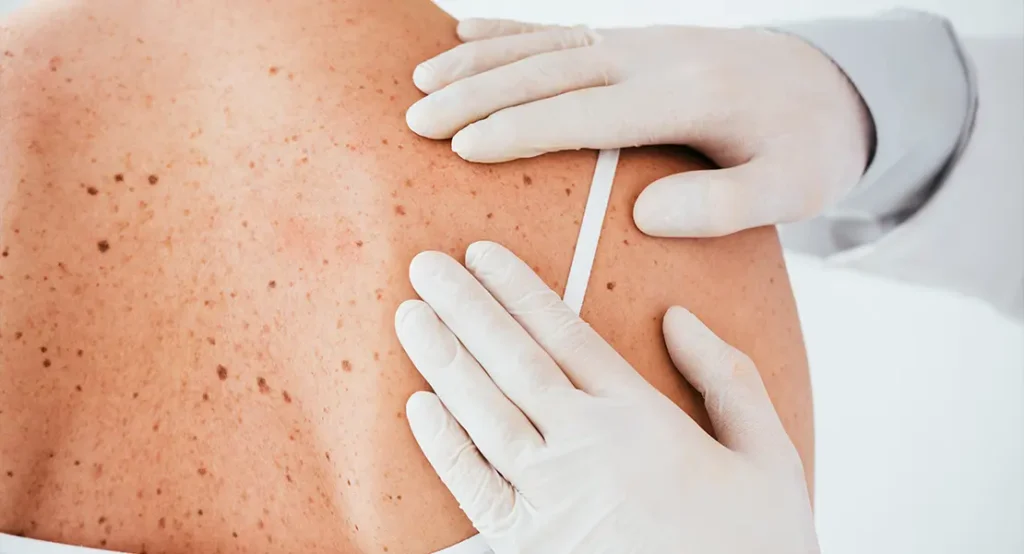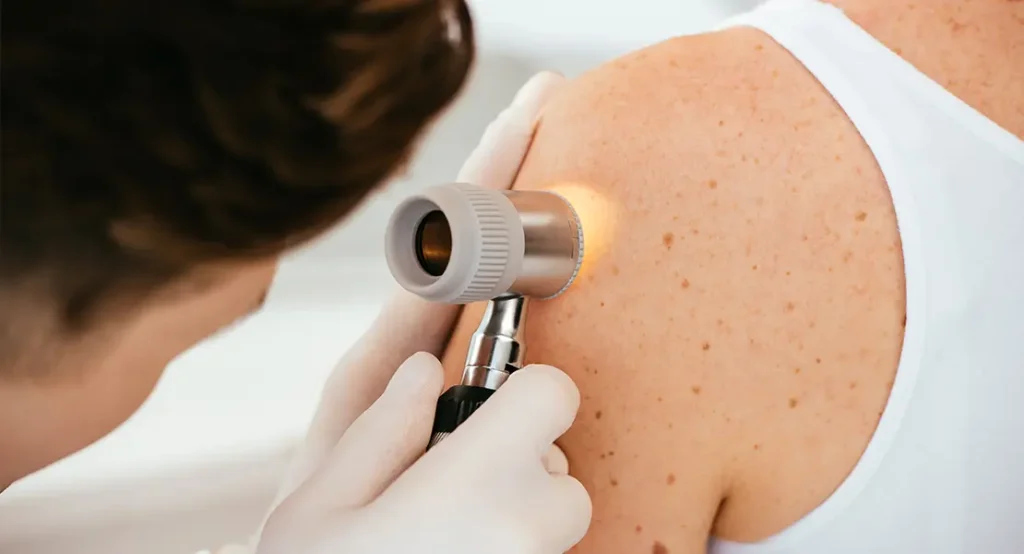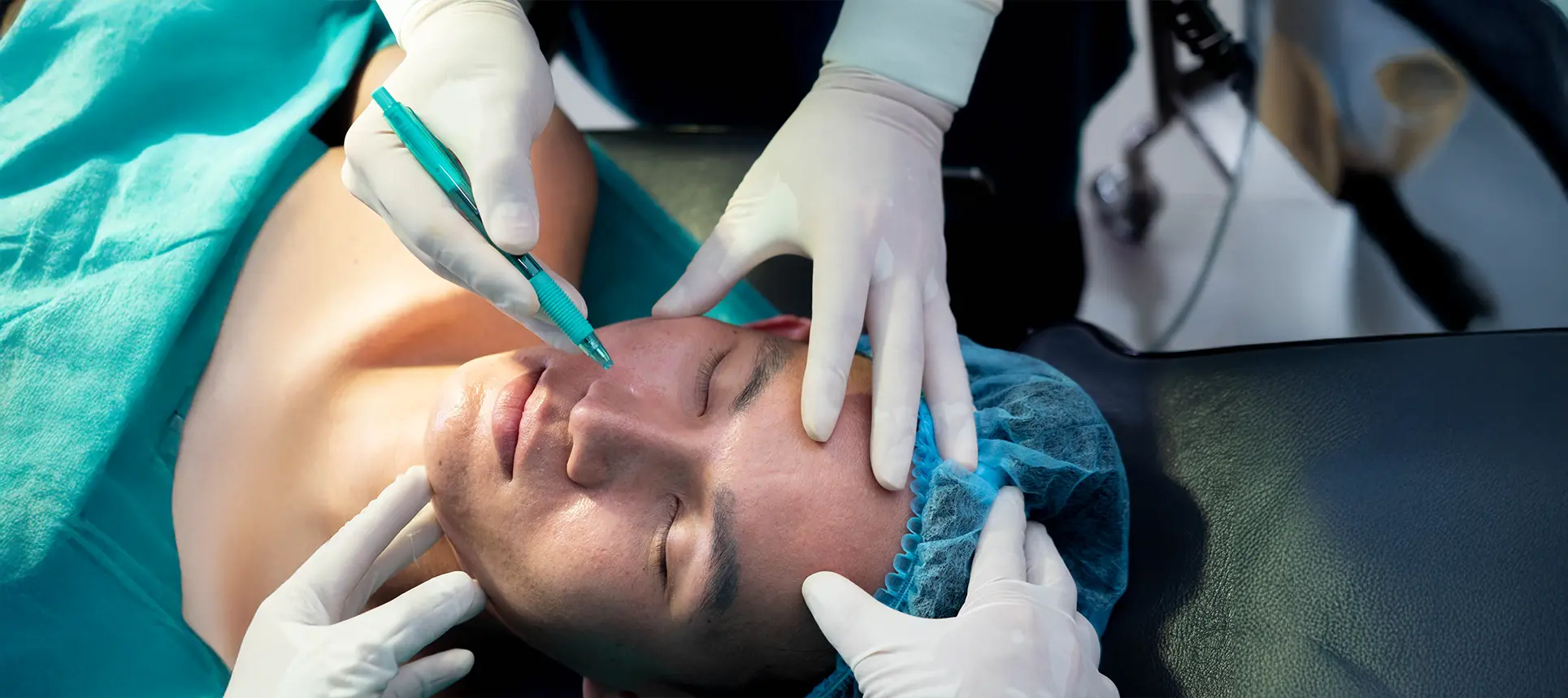If you’ve been told you need Mohs surgery or you’re just curious about what it involves, you’ve probably come across the term “Mohs dermatologist”. But what exactly do they do? And how are they different from other skin specialists? In this article, I’ll walk you through 15 of the most frequently asked questions about Mohs dermatologists — and give you detailed, down-to-earth answers to help clear things up.
1. What is a Mohs dermatologist?
A Mohs dermatologist is a skin specialist who’s been trained specifically in Mohs micrographic surgery — a precise technique used to treat certain types of skin cancer. What sets them apart is their ability to remove cancerous tissue layer by layer while immediately examining each layer under a microscope. This lets them ensure they’ve taken out all the cancer cells while sparing as much healthy tissue as possible.
It’s a highly specialised role, and Mohs dermatologists usually go through extensive training after completing their general dermatology qualifications. They don’t just treat skin cancer; they also play a crucial role in diagnosing the exact type and depth of the cancer. Their detailed knowledge of skin anatomy and pathology means they’re uniquely placed to manage both the surgical and diagnostic aspects of treatment.
Most people don’t realise that Mohs surgery is considered the gold standard for certain skin cancers, especially those on the face, neck, or other areas where preserving appearance and function is vital. Mohs dermatologists are often the go-to experts for these cases because of the delicate balance they strike between removing the cancer and leaving the skin looking as natural as possible.
So, if your GP or dermatologist refers you to a Mohs dermatologist, it means you’re in the hands of someone with advanced surgical and diagnostic expertise. It’s not just about cutting out the cancer — it’s about doing it in the most accurate and least invasive way possible.
2. How is a Mohs dermatologist different from a regular dermatologist?
While both Mohs dermatologists and regular dermatologists are qualified skin specialists, there are some key differences in their training and what they focus on day-to-day. Regular dermatologists manage a wide range of skin conditions, from acne and eczema to moles and rashes, and may treat skin cancer too — but they usually don’t perform Mohs surgery unless they’ve had extra training.
Mohs dermatologists, on the other hand, are specifically trained to carry out Mohs micrographic surgery, which requires both surgical skill and microscopic analysis. It’s a unique combination — most doctors either operate or examine tissue under a microscope, but Mohs dermatologists do both. That’s what makes the technique so effective and why their role is so specialised.
Because of this dual skillset, Mohs dermatologists tend to focus more on treating skin cancers, especially basal cell carcinomas and squamous cell carcinomas, which are the most common types. They’re often involved in complex cases or those located in cosmetically sensitive areas where precision really matters.
So, while a regular dermatologist might spot a suspicious mole and take a biopsy, a Mohs dermatologist is the one you’d likely be referred to if that mole turns out to be a skin cancer needing careful surgical removal. It’s all about having the right expertise for the job.
3. What types of skin cancer do Mohs dermatologists treat?
Mohs dermatologists primarily treat non-melanoma skin cancers, especially basal cell carcinoma (BCC) and squamous cell carcinoma (SCC). These are the two most common forms of skin cancer, and Mohs surgery is often considered the most effective treatment when they appear in high-risk areas like the face, ears, scalp, or hands. That’s because the technique allows for the complete removal of cancer cells while preserving as much healthy tissue as possible.
In some cases, Mohs dermatologists may also treat certain types of melanoma, particularly a subtype called lentigo maligna, which often develops on the face and grows slowly but extensively. However, because melanoma behaves differently from BCC and SCC, it isn’t always suitable for Mohs surgery unless the practice has access to specialised staining techniques to identify melanoma cells during the procedure.

What really determines whether Mohs is appropriate isn’t just the type of cancer, but also where it’s located, how aggressive it is, whether it’s recurred, and the size and shape of the tumour. Mohs dermatologists are trained to assess all of this before deciding if the surgery is the best course of action. They work closely with histopathologists and other specialists to make sure the approach is right for each individual case.
So, if you’ve been diagnosed with a skin cancer, your medical team may recommend a referral to a Mohs dermatologist if the tumour is in a tricky spot or if it’s come back after previous treatment. Their aim is to give you the highest cure rate with the least impact on your appearance and function.
4. How does Mohs surgery work, exactly?
Mohs surgery is performed in stages, all on the same day. It starts with the Mohs dermatologist removing the visible tumour and a thin layer of surrounding tissue. This layer is then processed and examined under a microscope while you wait. The goal is to check whether any cancer cells remain at the edges, known as the margins.
If cancer cells are still present, the surgeon knows exactly where they are and can go back and remove just that specific area. This process is repeated until no more cancer cells are detected. Because the tissue is examined in real time, there’s no guesswork — the surgeon knows when they’ve completely removed the cancer.
The beauty of Mohs surgery is its precision. Traditional surgery often involves removing a larger margin of healthy skin just to be safe. Mohs allows for the smallest possible removal of non-cancerous tissue, which is especially important in areas like the eyelids, nose, or lips, where you don’t want to lose any more skin than necessary.
Once the cancer is fully removed, the Mohs dermatologist will discuss reconstruction options with you. Depending on the size and location of the wound, this could be anything from letting it heal naturally to doing a skin graft or flap repair. The entire process is usually done under local anaesthetic, and patients are often surprised by how smooth and straightforward it all feels.
5. Is Mohs surgery painful?
Most patients are relieved to find that Mohs surgery isn’t painful at all during the procedure. That’s because the whole thing is done under local anaesthetic — you’ll be fully awake, but the area being treated will be completely numb. The injection of the anaesthetic might sting for a few seconds, but after that, you really shouldn’t feel a thing.
During the procedure, you’ll likely be sitting or lying down comfortably while the dermatologist removes the tissue and analyses it. Some patients bring a book, others just rest. Since the surgery is done in stages, you may be waiting between rounds, but again — there’s no discomfort during this time because the area remains numb.
After the anaesthetic wears off, it’s normal to experience a bit of soreness or mild discomfort, similar to what you’d feel after a minor cut or graze. Your Mohs dermatologist will provide guidance on managing this, usually recommending paracetamol and advising against using ibuprofen or aspirin if there’s a risk of bleeding.
So, while the thought of surgery on your face or body might sound daunting, Mohs is actually one of the least painful types of procedures. Most people are pleasantly surprised at how easy the recovery is — and if you do experience any pain that feels unusual, your care team will be on hand to help.
6. How long does Mohs surgery take?
The length of Mohs surgery varies depending on the size and complexity of the skin cancer, but it generally takes between two to four hours. That said, it’s not a continuous procedure — a good portion of the time is spent waiting while the removed tissue is analysed in the lab. You’ll be in a comfortable waiting area between stages, often just relaxing until the next step.
In cases where the cancer goes deeper or is more spread out than initially expected, the process can take longer. Sometimes several layers need to be removed before all the cancer cells are cleared. It’s a step-by-step process that prioritises accuracy over speed — which is what gives it such high success rates.
The surgical removal itself for each layer is fairly quick, often around 15 to 30 minutes. But the tissue processing and microscopic examination can take up to an hour per stage. Some people might only need one round, while others might need three or four — it really depends on how far the cancer has spread beneath the surface.

It’s best to keep the whole day free just in case. Bring something to read, and perhaps a snack and drink. The procedure is rarely rushed, and your Mohs dermatologist will want to be absolutely certain all the cancer is gone before moving on to reconstruction or dressing the wound.
7. What kind of training do Mohs dermatologists have?
Mohs dermatologists undergo extensive and highly specialised training beyond what’s required for general dermatology. After finishing medical school, they complete a foundation programme followed by dermatology specialty training. But it doesn’t stop there. To become proficient in Mohs surgery, they must then undertake additional fellowship training focused specifically on the Mohs technique.
This fellowship is intensive. It involves not just surgical training, but also learning to analyse tissue samples under a microscope — a skill more commonly associated with pathologists. Mohs dermatologists have to master both to perform the procedure correctly, as they’re responsible for removing the tumour and confirming in real time that all the cancer has been cleared.
These fellowships are competitive, and in the UK, they’re typically recognised and approved by the British Society for Dermatological Surgery or other similar professional bodies. They usually last around 12 to 18 months and involve performing hundreds of Mohs cases under supervision. That’s how they gain the precision and confidence needed to work on delicate or cosmetically sensitive areas.
So, when you’re seeing a Mohs dermatologist, you’re being treated by someone with years of focused experience. Their background combines the worlds of surgery, dermatology and pathology — and that’s exactly why Mohs surgery has one of the highest success rates of any skin cancer treatment available.
8. What are the benefits of Mohs surgery compared to other treatments?
One of the biggest benefits of Mohs surgery is its incredibly high cure rate — often quoted at around 99% for certain types of skin cancer when it’s used for the first time. That’s significantly higher than many other treatment options, including standard excision or topical therapies. It’s particularly effective for skin cancers that have come back after previous treatment, which can be tricky to manage.
Another major advantage is tissue preservation. Traditional surgery usually involves cutting a wider margin around the tumour to reduce the risk of missing cancerous cells. Mohs surgery, on the other hand, removes only what’s necessary. That’s ideal for areas like the face, hands or ears, where every millimetre of healthy skin matters in terms of function and appearance.
There’s also the benefit of immediate results. With standard excision, you typically have to wait days for a pathologist to check the margins of the removed tissue. But with Mohs, that analysis happens while you’re still in the clinic. If there’s any sign of remaining cancer, it can be removed right away, reducing the likelihood of needing further surgeries.
Finally, Mohs surgery allows for a single-day solution. You arrive, have the cancer removed, and — in many cases — go home with everything sorted. That kind of reassurance and efficiency is hard to beat, especially when dealing with something as serious as skin cancer.
9. What can I expect after Mohs surgery?
After Mohs surgery, most people are surprised at how manageable the recovery is. You’ll go home the same day with a bandage over the area and detailed instructions on how to care for the wound. There may be some swelling, bruising, or tenderness — especially if the surgery was on the face — but this usually settles within a week or so.
The wound care will depend on how your skin was repaired. If the area was stitched up, you’ll likely need to return a week later to have the sutures removed. If the site was left to heal on its own (a method called secondary intention), your Mohs dermatologist will advise on how to keep it clean and promote healing. In both cases, it’s important to follow the aftercare plan carefully to get the best cosmetic result.

You might notice some redness or tightness as the wound heals — that’s completely normal. Over time, most scars soften and fade. Your dermatologist might recommend scar massage, silicone gel, or even laser treatments later on if needed, especially for facial areas where appearance is a concern.
Emotionally, it can be a bit of a journey too. Even though the cancer is gone, adjusting to a scar or the experience of surgery can feel overwhelming at first. But remember — you’ve taken an important step in getting rid of the cancer for good, and Mohs offers one of the most skin-sparing and effective approaches to doing exactly that.
10. Are there any risks or complications with Mohs surgery?
Like any surgical procedure, Mohs surgery carries some risks — but they’re generally minimal and rare when the surgery is done by a trained specialist. The most common issues are bleeding, infection, or swelling after the procedure. These are usually mild and easily treated with standard wound care or antibiotics if needed.
Scarring is also possible, though Mohs surgery is specifically designed to minimise how much healthy skin is removed, which helps to keep scars as small and neat as possible. In some cases, the final appearance might need to be refined later, especially if the cancer was large or in a cosmetically sensitive spot. Your dermatologist will go through all these possibilities with you beforehand.
There’s also a small chance of nerve damage, particularly if the surgery is near nerves in areas like the cheeks or forehead. This can result in numbness or tingling, but it’s usually temporary. Permanent nerve damage is very uncommon, especially when performed by experienced hands.
Another rare complication is recurrence — when the cancer comes back even after Mohs. But the odds of that are very low thanks to the detailed way the tissue is examined during the procedure. If a recurrence does happen, your Mohs dermatologist will be the best person to manage it, often with a second round of surgery or an alternative treatment.
11. Will I need reconstruction after Mohs surgery?
Whether you’ll need reconstruction after Mohs surgery depends on the size and location of the skin cancer and how much tissue was removed. Sometimes the wound is small enough that it can simply be stitched up or even left to heal naturally. But in more complex cases — especially on the face — a more detailed reconstructive plan might be needed.
Mohs dermatologists are trained in a wide variety of closure techniques, including flaps and grafts. A flap involves moving nearby skin to cover the wound in a way that matches your natural contours. A graft involves taking skin from another part of your body and using it to repair the area. Both approaches aim to give the best cosmetic and functional result possible.
If the wound is particularly large or in a very delicate area, your Mohs dermatologist might bring in a plastic surgeon or oculoplastic specialist to assist with the reconstruction. This is common for cancers on the nose, eyelids or ears, where even a few millimetres can make a big difference to appearance or movement.
Whatever the case, the goal is always to remove the cancer completely while leaving you with a result that looks and feels as close to normal as possible. Your dermatologist will talk through all your options with you before the surgery — so there won’t be any surprises on the day.
12. How do I know if Mohs surgery is the right choice for me?
This really comes down to a combination of factors, which your dermatologist will carefully assess before making a recommendation. Mohs surgery is usually suggested for skin cancers in areas where preserving as much healthy skin as possible is important — like the face, scalp, ears, or hands. It’s also a go-to option for cancers that have come back after previous treatment or those that are particularly large or aggressive.
Your dermatologist will look at the type of skin cancer you have (most commonly basal cell carcinoma or squamous cell carcinoma), how deep it goes, whether it has well-defined edges, and whether it’s a high-risk subtype. If the cancer ticks any of those boxes, Mohs surgery is likely to offer the best combination of cure rate and cosmetic outcome.
That said, not every skin cancer needs Mohs. For smaller or less aggressive cancers on less visible areas of the body, a standard excision, cryotherapy, or even topical treatments might be perfectly suitable. Mohs is best reserved for cases where accuracy and tissue conservation are critical — it’s all about choosing the right tool for the job.
Ultimately, your dermatologist will discuss your options with you, taking your preferences, medical history, and lifestyle into account. If Mohs is recommended, it’s because your care team believes it offers the best balance of effectiveness and long-term skin preservation.
13. Can Mohs surgery be used on melanoma?
Mohs surgery isn’t routinely used for most types of melanoma, but there are some exceptions. The main challenge with melanoma is that it behaves differently from other skin cancers — the cancer cells can be more difficult to detect using standard stains during the Mohs process. However, when special immunohistochemical stains are available, Mohs can be an option in select cases.
One example is lentigo maligna, a slow-growing form of melanoma that tends to occur on sun-exposed areas like the cheeks or forehead. In these cases, Mohs surgery can be used successfully, particularly when performed in centres equipped with advanced staining techniques. The ability to precisely remove the cancer while sparing surrounding tissue is a major advantage here.

That said, conventional treatment for most melanomas still involves wide local excision, sometimes followed by a sentinel lymph node biopsy or additional therapies depending on how advanced the cancer is. Your medical team will usually involve an oncologist or melanoma specialist in these decisions, especially if the cancer is more aggressive.
So while Mohs isn’t the first-line approach for most melanomas, there are certain cases where it may be considered — particularly when aesthetics matter and the right resources are available. It all depends on the specific characteristics of the tumour and where you’re being treated.
14. Is Mohs surgery available on the NHS?
Yes, Mohs surgery is available on the NHS, but access can vary depending on your location and the availability of trained Mohs dermatologists in your area. It’s typically offered at larger dermatology centres and hospitals where the necessary equipment and expertise are in place. In some areas, patients may need to travel to a specialist unit for the procedure.
Your GP or general dermatologist can refer you to a Mohs service if they believe it’s the most suitable treatment for your condition. However, like with many NHS services, there may be a waiting period — particularly if the cancer is considered lower-risk or if demand is high. For urgent or complex cases, things tend to move more quickly.
If you’re considering private treatment, there are also several clinics in the UK that offer Mohs surgery on a self-funded basis. This can sometimes reduce waiting times or allow you more choice over your surgeon and appointment date. Either way, you should always check that the dermatologist is fellowship-trained and experienced in Mohs procedures.
So yes, Mohs is certainly an option on the NHS — and in many cases, it’s the first choice for complex or facial skin cancers. The key is to speak with your dermatologist about your options and ask whether a Mohs referral is appropriate for your specific case.
15. What questions should I ask my Mohs dermatologist before the procedure?
It’s completely normal to feel a bit anxious before having any kind of surgery, and asking the right questions can really help put your mind at ease. A good place to start is by asking how experienced your Mohs dermatologist is and how often they perform the procedure. Most will be happy to talk you through their background and qualifications.
You might also want to ask about what to expect on the day — how long it will take, what kind of anaesthetic will be used, and whether you’ll need someone to accompany you home. Understanding the process ahead of time can make everything feel more manageable and less intimidating.
Don’t forget to ask about the reconstruction plan too. Will it be done immediately after the cancer is removed? Are stitches likely? What kind of scar should you expect, and how long will the healing process take? These details will help you prepare both physically and emotionally for the recovery period.
Finally, make sure you ask about follow-up care. Will there be a review appointment? What signs should you watch out for during healing? Will you need regular skin checks in the future? Getting clarity on these points helps you feel confident that you’re being looked after long after the procedure is done.
Final Thoughts
Mohs dermatologists are highly trained experts who bring together surgical precision and microscopic skill to tackle skin cancer in the most effective way possible. Whether you’ve just been referred for Mohs surgery or are simply trying to understand your options, knowing the ins and outs of what these specialists do can make a big difference to how prepared and reassured you feel. Always remember — asking questions is part of good care, and a great Mohs dermatologist will take the time to answer every single one. If you’re concerned about your skin health, you can book a consultation with one of our expert dermatologists at The London Dermatology Centre.
